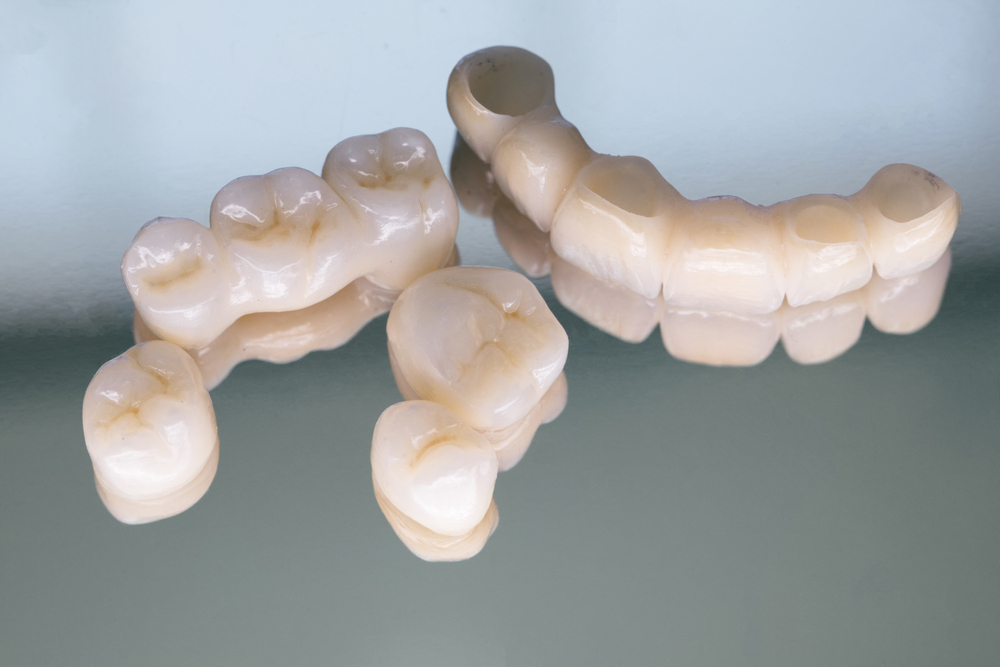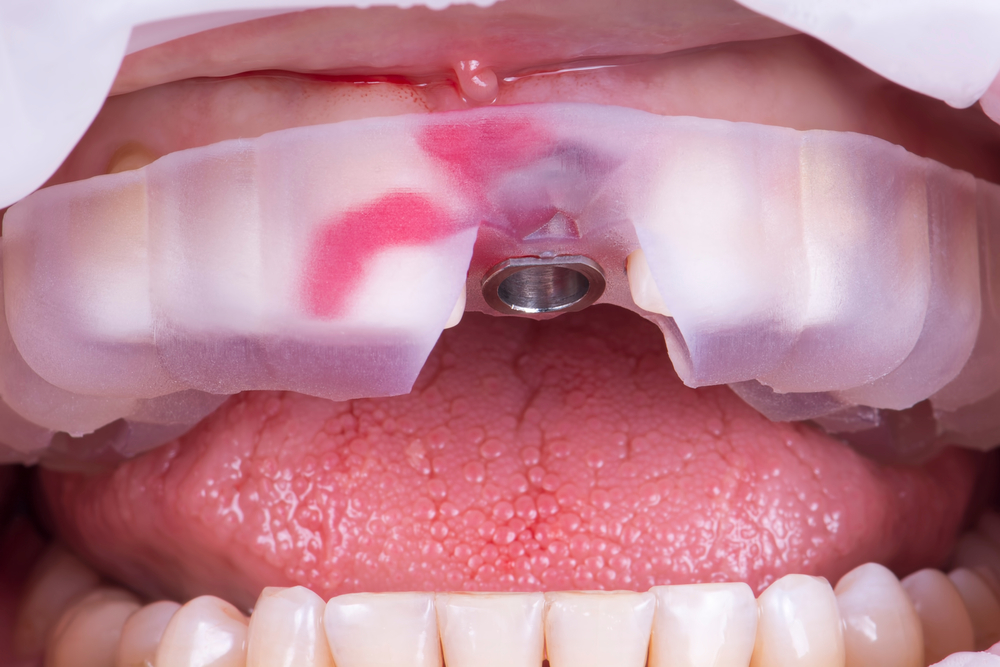Few other industries have seen material innovation like 3D printing. Specialty printing materials are available for various products, printing processes, industries, and use cases. Dental and medical materials carry stringent requirements on biocompatibility, safety, and durability, which has historically limited the application of 3D printing in manufacturing dental products.
Advanced printers have improved printing techniques and are compatible with new 3D printer dental resins. These advanced resins support a variety of dental applications, including clear aligners and retainers. 3D printing dental solutions enable new production methods and business models for practitioners and dental labs and require resources for evaluating the range of available 3D printer dental resins. The following comprises a short guide on selecting the best 3D printable resins for different dental appliances.

Advanced 3D Printer Dental Resin Options
There are many 3D printer options for producing dental products. Although many material and printer options exist, there is no universal dental resin; each resin must pair with the right system to produce specific products. Advanced 3D printers that use photopolymerization processes and dental resins can produce more accurate dental products that also have similar material properties and surface finish as traditionally manufactured appliances.
Comparing Materials and Finished Dental Products
Currently, practitioners and labs can use advanced optical processes like DLP to print a range of products, including:
- Night guards and retainers
- Clear aligners
- Thermoforming molds
- Dental study models
- Surgical guides
- Crowns and bridges
These products would typically require a specialized process and materials to ensure accuracy. 3D printing solutions can manufacture all of these final products and meet specific material property requirements and certifications required for each application.
Essential Material Properties
The following material properties are reviewed to evaluate 3D printer dental resins:
- Flexural Modulus: Relates bending deformation to bending stress placed on a material in the elastic region.
- Flexural Strength: Defines the stress at which the elastic regime ends and permanent bending deformation occurs in a material.
- Tensile Modulus: Relates the tensile deformation to tensile stress placed on a material in the elastic region. This value is often referred to as a material’s stiffness.
- Tensile Strength: Defines the stress at which the elastic region ends, and permanent deformation occurs during twisting.
- Shore D Hardness: An indentation test that is defined on a scale of 0 to 100. Test methods used to measure Shore D Hardness are ASTM D2240 and ISO 868.
- Elongation at Break: This quantity defines the ratio of the deformed length and initial length during a fracture test. This quantity is also known as fracture strain.
In general, 3D printer dental resins require very high flexural and tensile moduli and strength values. Finished products have different requirements, with the goal of ensuring patient comfort, appropriate texture, and color. Pairing the right 3D printer with suitable dental resins allows practitioners and dental labs to meet these requirements.
LuxCreo’s 3D Printer Dental Resin Options
SLA 3D printing products, like molds and dental models, don’t offer the same throughput and surface finish as DLP or LCD 3D printing, even though both technologies use photopolymer resins. Instead of using SLA, LuxCreo offers multiple dental resins for DLP and LCD printers that produce all of the above dental products and with a much better surface finish. The table below lists some critical evaluation metrics and ideal products to print with LuxCreo’s materials and printing systems.
| Material | Attributes | Ideal Products |
| DMR | High strength, high hardness, low-shrinkage opaque resin for fabricating stiff models. -Flexural Strength: 100 MPa -Tensile Strength: 50 MPa -Flexural Modulus: 3650 MPa -Tensile Modulus: 2750 MPa -Shore D Hardness: 86 -Elongation at Break: 3.2% | – Molds for high throughput thermoforming – Study models |
| DSG | High strength, high hardness resin with low sorption and solubility, ISO 10993 biocompatible. -Flexural Strength: 125 MPa -Tensile Strength: 70 MPa -Flexural Modulus: 3500 MPa -Tensile Modulus: 2950 MPa -Shore D Hardness: 85 -Elongation at Break: 4.1% | – Orthodontic surgical guides |
| DNG | Moderately flexible material for high-speed 3D printing. This material can be printed completely clear with very little post-processing. -Flexural Strength: 80 MPa -Tensile Strength: 39 MPa -Flexural Modulus: 2037 MPa -Tensile Modulus: 2127 MPa -Shore D Hardness: 82 -Elongation at Break: 14% | – Retainers – Nightguards – Dental splints – Clear aligners |
When evaluating 3D printable dental resins, criteria must also include biocompatibility, printing speed, and cost. Combining LuxCreo’s dental materials with high-throughput DLP processing in LuxCreo’s advanced 3D printers provides practitioners and dental labs with a flexible solution to produce various dental applications. The vertically integrated solution gives a cost-competitive edge over traditional processes, and LuxCreo’s materials have received FDA approval for use in dental appliances.
Dental products need to be paired with the right 3D printer and dental resin, requiring additional special considerations. Three common examples include custom dental models, surgical guides, and clear aligners.
Dental Models
The primary requirements for 3D printed dental models used for thermoforming are high accuracy and high mechanical strength and stiffness. Dental model materials require low shrinkage in x, y, and z directions to ensure the accuracy of thermoformed products. The most versatile ‘dental model 3D printer resin’ supports horizontal and vertical printing with high strength for high dimensional accuracy after curing. Finally, printing materials for dental models must allow thermoformed materials to easily release from the dental model for fast and efficient processing.
Surgical Guides
Surgical guides need to be accurate and have high structural strength and stiffness to tightly fit the metal bushing and drill guide. Directly printing highly accurate surgical guides eliminates secondary machining steps often needed to improve accuracy.
Most 3D printers have trouble printing multiple holes in a single surgical guide that are not aligned with the printing direction. With high-resolution DLP printers, LuxCreo’s machines produce surgical devices with high accuracy, strength, and stiffness, and the holes do not need to align with a printing direction – reducing the time and expense.

Clear Aligners
Clear aligners made from thermoplastic material require significant processing, including heating, thermoforming, cutting, and grinding, to produce the final product. LuxCreo’s advanced resin materials and dental printers do not need significant post-processing to produce high-quality clear aligners. Clear aligners are directly 3D printed, followed by washing and support removal. The LuxCreo solution significantly reduces the required labor, the material used, and turn-around time to deliver clear aligner appliances to patients. Directly printing clear aligners delivers the most efficient production process and enables “same-day aligners.”
Choose a Complete Solution for 3D Dental Manufacturing
Streamlined digital dentistry is now possible with 3D printing solutions that combine software, advanced materials, high-throughput machines, and an easier production workflow. LuxCreo’s dental software, resins, and printers are vertically integrated to simplify and streamline dental device manufacturing for dental labs and offices. Dental labs, orthodontic offices, and dental offices can now achieve a “same day” turnaround, with less labor and material waste and higher quality, accelerating the transition to more digitalized workflows and sustainable business models.
LuxCreo’s patented LEAP™ (Light Enabled Additive Production) process with advanced dental resins and3D printing systems can produce a variety of dental appliances. With a production-first approach and offering cloud-connected 3D printers, high-performance materials, and an on-demand Smart Factory production service, LuxCreo enables rapid prototyping and volume production. For more information on how our services can improve your supply chain and manufacturing processes, visit our contact page or call (650) 336-0888.